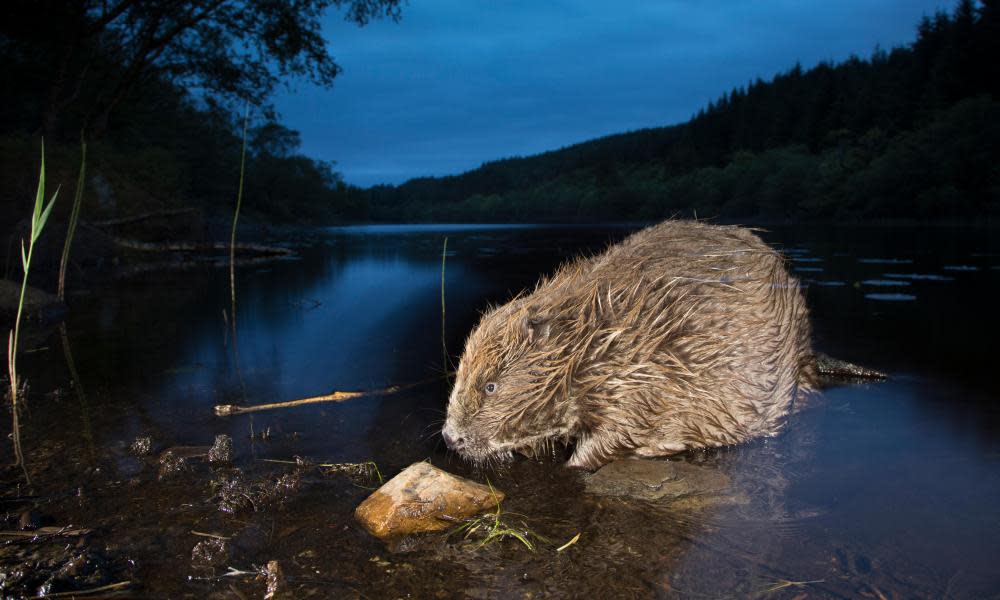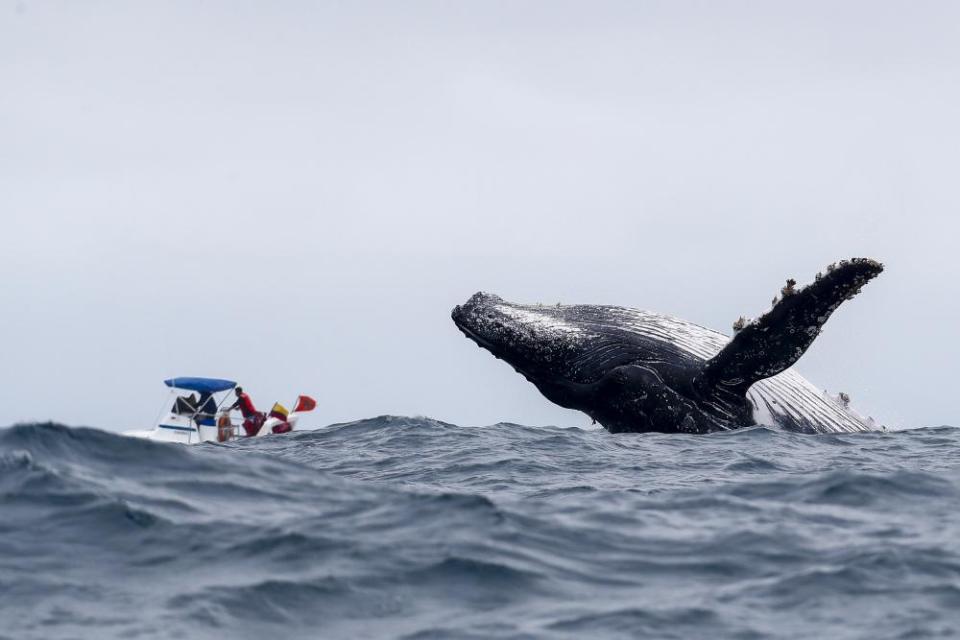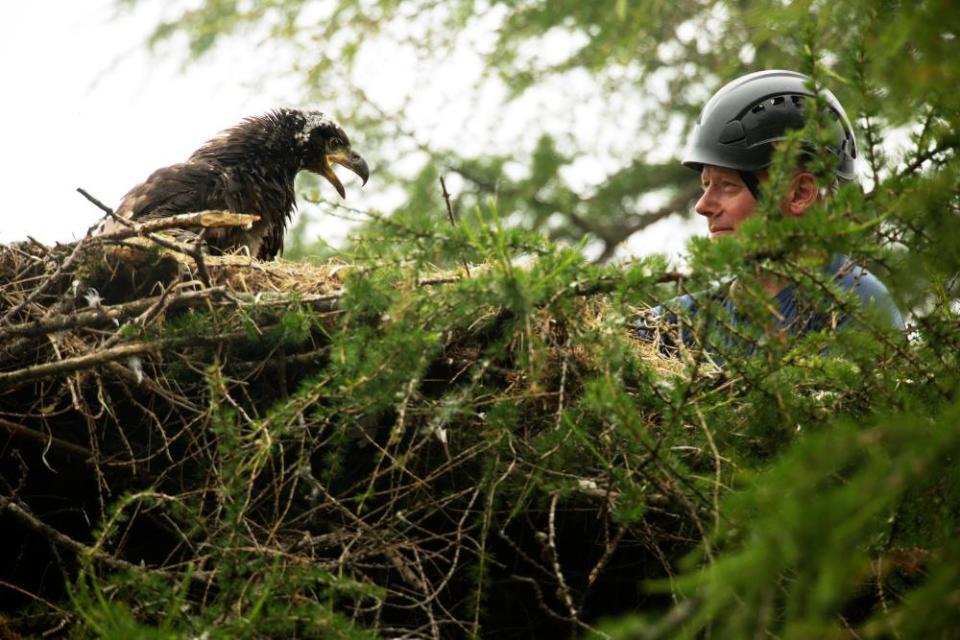Back from the brink: how bison, bears and beavers returned to Europe

Top predators are making a comeback across Europe, according to a new report compiled by the Zoological Society of London, BirdLife International and the European Bird Census Council for Rewilding Europe. These are some of the top species making an “exciting” recovery:
Eurasian beaver
Beavers started to decline in the 17th century with the introduction of steel traps and guns, as they were hunted for their fur, meat and castoreum (a liquid beavers produce to mark their territory that is used in perfumes, food and medicine). By the 20th century there were just 1,200 left, but since the 1950s populations have been recovering, with significant increases in central and western Europe. Between 1960 and 2016, the population increased by 16,700%, with its range increasing in size by 800%. Recovery has been possible thanks to legal protection and bans on hunting, as well as species reintroductions. Beavers are a keystone species, significantly improving river habitats.
European bison
Bison are the largest herbivores in Europe, and would have been widespread on the continent until deforestation, hunting and a changing climate caused numbers to collapse. A 1927 expedition could not find any wild bison and the current population descends from 12 captive animals. Reintroductions – which started in 1952 – have driven their dramatic recovery. Population distribution has increased by 400% between 1971 and 2010, with a 16,000% increase in numbers over that time. Ecologically, bison knock down trees, and like wallowing in mud and stripping bark, all of which help maintain complex landscapes, benefiting a number of other species.
Eurasian elk
Elk browse and trample vegetation, creating dynamic, scrubby habitats. They also help disperse seeds and are preyed on by top carnivores, such as wolves. They have roamed Europe since the early Holocene yet by the mid-20th century only existed in Scandinavia and Russia, largely as a result of hunting by humans. Hunting restrictions and forest regeneration have driven recovery in Finland, Norway, Sweden and Poland. Translocation programmes, such as moving them from Belarus to Poland in 1951, accelerated these efforts. The size of their territory increased by 31% between 1955 and 2010, and there are now 885,000 individuals across central and eastern Europe.
Grey wolf
Historically, wolves were one of the planet’s most widely distributed mammals, but centuries of persecution by humans has decimated populations. By the 1970s they were only present in pockets of southern and north-eastern Europe. The population has since increased by 1,800%, with at least 17,000 individuals roaming across almost all of continental Europe. Legislation protecting them from hunting and greater tolerance by the public has helped drive their recovery, as well as having fewer people living in the remotest rural areas. Wolves are top of the food chain and are believed to create “landscapes of fear”, which limit how intensively prey such as elk graze, thereby directly and indirectly affecting the prospects of a number of other species.
Brown bear
The brown bear was present in Europe from the late Pleistocene but widespread deforestation and hunting saw the first major reduction in numbers during the Roman empire. Since 1960, however, numbers have increased by 44% to a current European population of more than 50,000. As with many of these large carnivores, legal protection and curbs on hunting are significant drivers of its recovery. Persecution is still a big risk, and conflicts between humans and bears continue to be a problem as they damage livestock, orchards and crops.
Humpback whale

The charismatic cetaceans can be found in all major oceans and are known for trapping schools of fish by surrounding them with bubbles. Ecologically, they are often called whale pumps because they dive so deep and swim so far, moving excrement around the ocean as they do. When they die, their bodies fall to the bottom of the ocean, providing nutrients to life in the deep sea.
They were targeted by whalers from the 17th century for oil, meat and a bone-like material called baleen but their decline was halted with the global ban on hunting introduced in 1966. Between 1997 and 2009, the population increased by 37% and there are about 25,000 in Europe.
Bearded vulture
These birds live in mountains above 1,000 metres, feeding mainly on carrion, especially old bones, which they carry high into the sky and then drop on to rocks to break. They clear up everything that other scavengers leave behind, which helps recycle nutrients within ecosystems. Shooting drove declines until they only survived in the Pyrenees, Corsica and Crete. Since 1991, the bearded vulture’s population has increased by 120% largely thanks to reintroduction programmes in France, Spain and Germany. There have also been bans on poisoning carcasses and shooting the birds. There are now about 792 pairs. However, it is not all good news – the large population in Azerbaijan is in decline and populations in Turkey are still being persecuted.
White-tailed eagle

These birds of prey can thrive in a range of habitats near water, rivers or coastal habitats as their main source of food is fish, but they also prey on other birds and marine mammals. From the 1800s, populations of this widespread bird started to collapse due to persecution and, later, from the impact of pesticides. Banning the chemicals responsible and stopping people shooting them has driven their recovery. There are now 12,500 pairs, widely spread over much of Europe, with a 450% increase in numbers recorded between 1970 and 2018.

 Yahoo Movies
Yahoo Movies 
